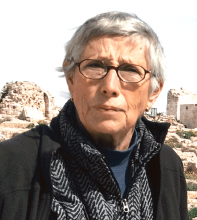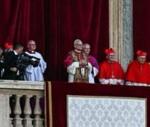You are here
Beware the Ides of March
Mar 12,2014 - Last updated at Mar 12,2014
The “Ides of March” was a turning point for the Arab region as was March 15, 44 BC, the day Julius Caesar was assassinated.
This event began the transformation of the Roman Republic into the dictatorial Roman Empire.
In 2011, Syria followed Tunisia, Egypt, Libya and Yemen by staging an uprising against decades-old governance by the Baath Party and the Assad family.
Just as Caesar’s murder created upheaval in Rome and its conquests, the Syrian crisis has transformed the “Arab Spring” into a long winter of death and destruction involving both the region and the international community.
Syria’s unrest began in Daraa, a rich farming region, when heedless teenagers spray painted “As shab yurid isqat an nizam” (The people want the fall of the regime”) on walls in Daraa city.
The provincial governor arrested and abused the teenagers, the people protested both peacefully and with bouts of violence, launching the bitter conflict that is now entering its fourth year and is spilling over its borders into neighbouring states.
Tunisians overthrew their dictator, Zine Al Abidine Ben Ali in relatively short order, Egypt’s president of 30 years, Hosni Mubarak, held on for 18 days, Libya’s leader Muammar Qadhafi for nine months, and Yemeni president Ali Abdullah Saleh for a year.
Syria’s President Bashar Assad is still in office and in power in Damascus and large areas of the country.
Tunisia was a straightforward case. Once Ben Ali and his family were expelled, the country gradually found its way to a democratic path, although its economic woes have not been resolved.
Egypt has had a difficult passage since Mubarak’s fall and has not yet launched its transition to democracy, nor tackled its dire economic and social problems.
First the military and then the Muslim Brotherhood took power, but both failed to meet the demands of Egypt’s millions of energised and politicised people who continue to call for “freedom, bread and dignity”, and are determined to make their rulers accountable.
Libya is broken and subjected to the disruptive rule of militias that could not have ousted Qadhafi without Western military intervention, while Yemen remains a failed state threatened by secessionists in the south and north and battling Al Qaeda in its poverty-stricken mountains.
While there has been regional and international involvement to a greater or lesser extent in the Tunisian, Egyptian, Libyan and Yemeni “Arab Springs”, the Syrian protests rapidly became a civil conflict because regional and Western powers waged “proxy wars” on Syrian soil.
These wars prolonged and deepened the conflict that has slain at least 100,000 and devastated a country that had made considerable economic progress during the first decade of the 21st century.
During late 2011 and early 2012, I visited Damascus, Hama and Daraa. At that time, the writ of the government still ran in spite of occasional protests. But external forces were at work.
In the Damascus suburb of Muadamiya, which became a battleground, I interviewed a wise barber whom I called the “Sage of Muadamiya”.
He explained what was happening in simple terms. Uneducated, unemployed and disaffected young men were offered guns smuggled into Syria from Lebanon along well-established routes and were recruited into local militias under opportunistic commanders seeking power and pelf.
The empowered youths attacked police stations and army checkpoints, sabotaged street lighting in the quarter, kidnapped and held people for ransom and hijacked cars.
Eventually, these youths were given a salary of $200 a month, a goodly sum for wayward gunmen.
The army and security forces retaliated, angering the local people already critical of government corruption and launching a cycle of violence across the country that has yet to end.
Late last year, the war-weary inhabitants of besieged and blockaded Muadamiya — whether barely subsisting in the ruins of their neighbourhoods or dwelling as refugees in safer districts of the capital — exerted pressure on the gunmen to accept a ceasefire.
Food and medical supplies were allowed into the area, heavy arms were collected, women, children and elderly men were evacuated. Gunmen were interrogated, some freed, others detained.
Muadamiya became a model for another 70 ceasefires now concluded around Damascus and elsewhere, although there are spoilers among units of the “Free Syrian Army”, Al Qaeda-linked Jabhat Al Nusra and the Islamic State of Iraq and the Levant and other fundamentalist or jihadist factions that have external supporters who care little about the people or fate of Syria.
Ceasefires and humanitarian access were principal demands laid down in the communiqué issued by Geneva I, the conference held in the Swiss city on June 30, 2012, which was the basis for Geneva II talks between government and opposition delegations this past January.
Instead of building on local ceasefires and encouraging the resumption of the Geneva II talks, the UN and the Western and regional powers involved in the Syrian conflict blamed the government for the failure of Geneva II to resolve the crisis and stood aside in the hope that client insurgents will somehow reverse recent government gains on the battlefield.
To what purpose?
To force Assad to capitulate at a time he has no intention of doing so, in order to usher in the division of Syria into fiefdoms ruled by narrow fundamentalists and jihadists.
The tug-of-war over Ukraine between Russia and the West has sidelined the Syrian conflict, left its hapless citizens without hope and put the country’s remaining infrastructure at risk.
Furthermore, it is absolutely certain that by challenging Russia in its Ukrainian backyard, the West will make Moscow all the more determined to ensure Assad’s survival, its main strategic asset in this region.
As the Syrian war enters its fourth year, the Western powers and their regional allies should rethink their policy and come up with compromises acceptable to Damascus and Moscow, as well as opposition figures who have some standing at home, with the aim of preserving Syria’s unity and pluralism.
A devastated Syria divided among jihadist emirs is in no one’s interest.













